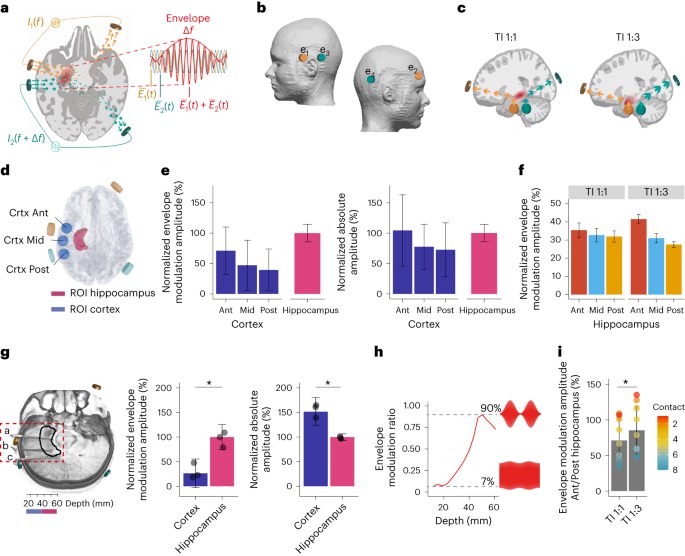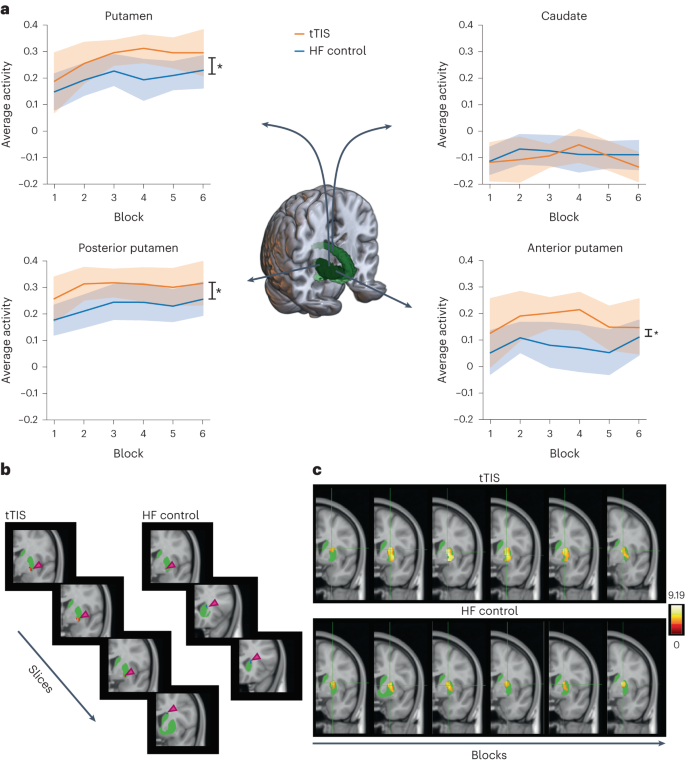2023-10-19 インペリアル・カレッジ・ロンドン(ICL)
◆この方法は「時間干渉法(TI)」と呼ばれ、頭部に電極を配置し、脳に電場を送る非侵襲的なアプローチです。TIは脳の深部である海馬を刺激し、周囲に影響を与えないため、手術なしで深部脳刺激が可能になりました。初期の研究では、健康なボランティアに対する試験で、TI刺激が記憶機能を改善する助けになることが示されました。
◆現在、早期のアルツハイマー病患者を対象に臨床試験が進行中で、TIが記憶障害の症状を改善する可能性が探られています。この研究により、深部脳刺激の新たな治療法の展望が広がり、脳疾患の治療や脳の機能に関する新たな知見の獲得が促進される可能性があります。
<関連情報>
- https://www.imperial.ac.uk/news/248635/surgery-free-brain-stimulation-could-provide-treatment/
- https://www.nature.com/articles/s41593-023-01456-8
ヒト海馬への非侵襲的な時間干渉電気刺激 Non-invasive temporal interference electrical stimulation of the human hippocampus
Ines R. Violante,Ketevan Alania,Antonino M. Cassarà,Esra Neufeld,Emma Acerbo,Romain Carron,Adam Williamson,Danielle L. Kurtin,Edward Rhodes,Adam Hampshire,Niels Kuster,Edward S. Boyden,Alvaro Pascual-Leone & Nir Grossman
Nature Neuroscience Published:19 October 2023
DOI:https://doi.org/10.1038/s41593-023-01456-8

Abstract
Deep brain stimulation (DBS) via implanted electrodes is used worldwide to treat patients with severe neurological and psychiatric disorders. However, its invasiveness precludes widespread clinical use and deployment in research. Temporal interference (TI) is a strategy for non-invasive steerable DBS using multiple kHz-range electric fields with a difference frequency within the range of neural activity. Here we report the validation of the non-invasive DBS concept in humans. We used electric field modeling and measurements in a human cadaver to verify that the locus of the transcranial TI stimulation can be steerably focused in the hippocampus with minimal exposure to the overlying cortex. We then used functional magnetic resonance imaging and behavioral experiments to show that TI stimulation can focally modulate hippocampal activity and enhance the accuracy of episodic memories in healthy humans. Our results demonstrate targeted, non-invasive electrical stimulation of deep structures in the human brain.

